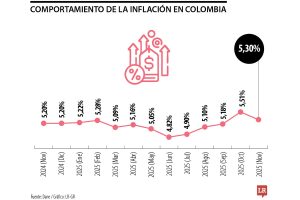Wall Street still needs more to coax it back. But non-American firms may be ready to return.
FOR CHINESE stocks to outperform American ones is rare enough. But this year the MSCI China index has beaten its American equivalent by an impressive 20 percentage points, on the back of excitement about cutting-edge tech firms such as DeepSeek and Manus AI. American shares, meanwhile, have been weighed down by worries about a bellicose Trump administration and the danger of a slowing economy.
Could this revival be enough to entice international investors back to China? It has been a rocky romance so far. When outsiders looked at China’s vast economy and rapid growth in the early 2010s, many saw a land of endless opportunity. More recently, however, slowing growth and a government crackdown on private firms, ranging from video-game makers to tutoring companies, has led to a reduction in the share of domestically listed stocks that are held by foreign institutions. From 6.4% at the start of 2021, it fell to just 4% at the end of 2024.
When it comes to mainland stocks, though, investors are more reluctant. Cheapness may be necessary for a resumption of foreign interest, but it is not sufficient. Three issues make investors cautious. All would have to be resolved for them to return in good number.
Some progress has been made on the first issue, which was what initially sent foreign investors running for the hills. China’s tech crackdown began in 2020, when officials cancelled the initial public offering of Ant Group, the fintech arm of Alibaba, a tech giant, after the firm’s founder, Jack Ma, criticised the country’s regulators. The move sparked discussion of whether China had become “uninvestable”. Now a thaw seems to be in progress. Last month Xi Jinping, China’s president, got together with a group of private-sector leaders that included Mr Ma and Liang Wenfeng, the founder of DeepSeek. Mr Xi stressed the importance of entrepreneurship and the scale of the Chinese market.
A revival in the Chinese economy would help too. The slump of the past few years, driven by the country’s troubled property industry, has knocked consumer spending, the main engine of growth for most large Chinese companies. Here, the necessary work is half-done at best. On March 16th the state laid out a new economic-rescue plan, apparently demonstrating its commitment to boosting consumption. The plan included schemes to subsidise interest on consumer loans and a modest increase in China’s stingy government pension. Yet it was worth only 2% of GDP—not quite the bazooka required to really get consumption going.
The last challenge, and the one that looks least likely to be resolved in the foreseeable future, is politics. Miserable relations between China and America have made Uncle Sam’s investors wary. In 2023 Joe Biden, then America’s president, signed rules that required American private-equity investors to receive approval if they wished to invest in some high-tech Chinese sectors. Mr Trump is likely to expand their reach.
For Wall Street itself, that means the hurdle to investing in China has been raised. But there are plenty of investors in other countries who have trillions of dollars of their own to deploy. Capital allocators in New York may feel as if they cannot appear too bullish on China for political reasons. Their peers in Dubai, Geneva and Singapore will not feel the same compunctions. Indeed, American politics may push foreigners towards China even as it keeps Americans out. The Trump administration’s chaotic spending cuts and on-again, off-again tariff promises are a big part of why American markets are in the doldrums.







